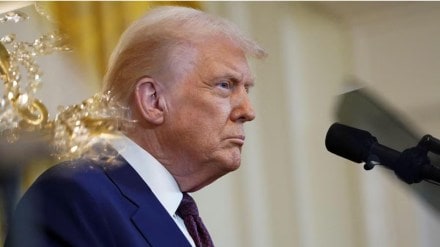By Biswajit Dhar
Coinciding with the 25% reciprocal tariffs imposed on India that became effective on August 7, President Donald Trump announced that the current impasse over the India-US bilateral trade negotiations is here to stay. He indicated that the negotiations would remain suspended “until the issue of tariffs is resolved”, the cryptic remark indicating that he would wait and watch until the August 21 deadline for the imposition of the additional ad valorem tariffs of 25% on account of India’s oil imports from Russia. President Trump gave legal effect to these “secondary tariffs” through his executive order issued on August 6, which draws upon his predecessor President Joe Biden’s executive order 14066 of March 22, 2022, expanding the scope of the national emergency declared in 2021.
President Biden’s March 2022 executive order, issued after Russia’s invasion of Ukraine, disallowed “certain imports and new investments with respect to continued Russian Federation efforts to undermine the sovereignty and territorial integrity of Ukraine”, “prohibiting, among other things, the importation into the United States of certain products of Russian Federation origin, including crude oil; petroleum; and petroleum fuels, oils, and products of their distillation”. In addition, the executive order 14066 prohibited “new investment in the energy sector in the Russian Federation by a United States person, wherever located”.
President Trump invoked his predecessor’s executive order three days back since he deemed that the actions and policies of the Russian Federation “continue to pose an unusual and extraordinary threat to the national security and foreign policy of the United States”. Further, to deal with this situation, he determined “that it is necessary and appropriate to impose an additional ad valorem duty on imports of articles of India, which is directly or indirectly importing Russian Federation oil” and the additional duty would become effective from August 27. The US President instructed his secretary of commerce to determine whether any other country is directly or indirectly importing Russian Federation oil. If a country was indeed importing Russian Federation oil, “directly or indirectly”, his administration “shall recommend whether and to what extent [he] should take action as to that country, including whether [he] should impose an additional ad valorem rate of duty of 25 percent on imports of articles of that country”.
Why is only India being targeted?
The language of President Trump’s executive order unambiguously indicates that he is targeting India for importing Russian oil. While several countries have been “directly or indirectly” importing Russian oil, India is the only country that faced secondary ad valorem tariffs, over and above the reciprocal tariff of 25%. The Centre for Research on Energy and Clean Air has, in its analysis of Russian fossil fuel exports and sanctions for June published earlier in the month, showed that since the European Union (EU) imposed a ban on imports of Russian crude oil starting early December 2022, several countries, including China, Türkiye, Brazil, and of course, the EU, have been buying oil and oil products from the Russian Federation (bit.ly/4osWrBU). In fact, the EU has been the largest importer of liquified natural gas (LNG) and pipeline gas from Russia since it imposed an import ban on liquified petroleum gas, a ban on the use of EU ports for the transshipment of Russian LNG, and a ban on the import of Russian LNG into specific terminals which are not connected to the EU gas pipeline network. In other words, the bans imposed by Brussels were extensive, but yet its members continued to import energy products from the Russian Federation.
The Trump administration’s targeting of India for importing oil from the Russian Federation, “directly or indirectly”, becomes apparent from the trends in India’s exports of petroleum products to the EU. During fiscal 2021-22, which ended just after the Russian invasion of Ukraine, the Netherlands, which hosts the EU’s oil terminals, imported petroleum products valued at $5.2 billion, which was less than 8% of India’s total exports of these products. Within the next two years, Dutch exports of petroleum products had shot up nearly three times to over $14 billion or 17% of India’s exports of petroleum products. On the back of this trend, the Netherlands emerged as India’s third-largest export destination, after the US and the UAE. Though India’s exports of petroleum products to the Netherlands declined in value terms during the previous fiscal year to over $13 billion, its share in India’s exports increased to 21%. It is, therefore, a strange augury that while India’s exports of petroleum products to the EU was substantially higher than those prior to 2022, President Trump has chosen to target India for “directly and indirectly” importing Russian oil.
A deal that never came
It is important for India to continue to strongly counter President Trump’s “unfair, unjustified, and unreasonable” tariffs. While the larger importer of Russian oil, China, has been spared, India has been targeted. There is no doubt that the US President feels grossly undone as he was unable to clinch a coveted trophy, a bilateral trade agreement with India, which would have strengthened his claims of significant achievements during his second term—which he described as “200 days of winning”. The reciprocal tariff and the secondary tariff imposed on India for importing Russian oil is undoubtedly a reflection of his frustration of having failed to clinch possibly the most important among the trade deals he has negotiated during the past few weeks.
The writer is distinguished professor, Council for Social Development, New Delhi.
Disclaimer: Views expressed are personal and do not reflect the official position or policy of FinancialExpress.com. Reproducing this content without permission is prohibited.
